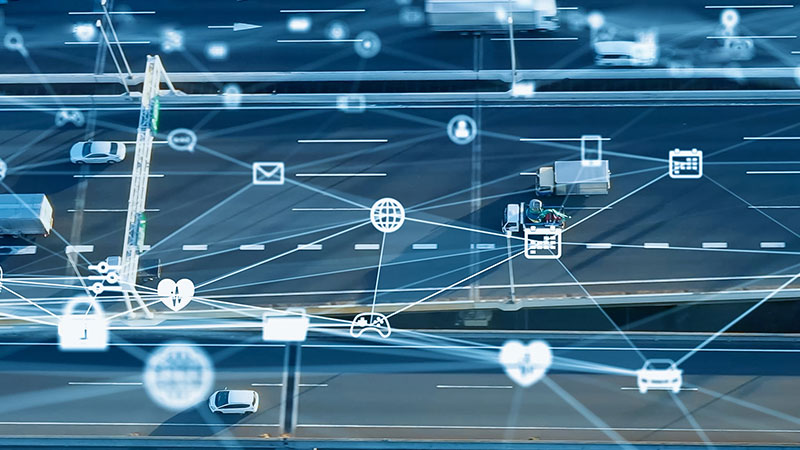GPS vs Telematics: What is the Difference?

Most of us are familiar with consumer GPS devices.
Maybe you run Google Maps on your smartphone. Or your car is equipped with Navman or Garmin.
Chances are that you have an introductory understanding of how GPS works, by connecting to a network of GPS satellites and computing turn-by-turn directions to your destination from your current location, sometimes with information about road conditions and traffic.
GPS has become easy to use and people use it everywhere. But when a friend told you that your business could get a boost to its bottom line by adopting telematics, you may have answered with “Telewhat?”
Let’s start with the bottom line. When a friend tells you that telematics can help your business, your friend is right. Telematics has helped hundreds of fleets lower compliance costs, fuel costs, and maintenance expense.
What Is Fleet Management Telematics?
Telematics can be given many meanings, but as it applies to fleet management, it refers to collecting data to generate actionable information for management at a remote location, that is, remote from the vehicle and operator that it monitors.
Your friend is right — telematics could provide your business with increased return on investment. Hundreds of fleets that have adopted telematics systems have saved on the cost of fuel, enhanced operator compliance with company regulation and traffic laws, and reduced the time drivers have to spend behind the wheel to meet their schedules. And let’s not forget that telematics can also provide reliable navigation for your drivers.
Telematics can transform your fleet from a gaggle of separate vehicles, each one demanding attention, into a cohesive, centrally managed, organized fleet with reliable standards and common objectives that boost your bottom line.
What’s the connection between GPS and telematics?
So, what’s the relationship between GPS, which we know pretty well, and telematics, which we don’t?
If you were to draw a Venn diagram of GPS and telematics, you would have a picture that tells you that all telematics involves GPS but not all GPS works as part of telematics.
Every telematics system includes a tracking device (or two tracking devices, which may or may not be integrated), with GPS built in. Telematics systems include GPS tracking data in the other data they send to the cloud to be accessed by home office computer systems. The telematics program translates data into meaningful information that displays on a dashboard at the dispatcher’s office.
GPS tells you where your vehicles are. Hardwired into the rig at the factory, or added after purchase (but voiding the warranty in many instances), GPS can also tell you how fast your operators have been driving, whether they have made required stops, and they have been stomping the pedal to the metal, slamming on the brakes, or spending too much time idle.
GPS tracking informs management of unauthorized vehicle movements. It can provide the raw data that goes into geofencing. It can help with automated IFTA reporting.
But telematics can collect a lot more data than GPS alone. Here are just some of the possibilities:
- Fuel consumption.
- Odometer readings.
- Diagnostic trouble codes.
Benefits of The Next Generation Of Telematics, Coming Online in 2021
Bluetooth and Wi-Fi Functionality. Dispatch can share any information they want with the driver through a phone app. They can also connect systems in the truck to the Internet of Things.
- Tire pressure monitoring system. Tire pressure of every tire on every vehicle in a fleet can be monitored from headquarters. Operators can act proactively to prevent the downtime caused by blowouts and axle issues.
- Remote lockout response. Cutting-edge telematics gives dispatch the ability to let operators into their locked trucks. It conceivably could be used to keep thieves and hijackers out — or in, after the vehicle has been disabled and law enforcement is on the way.
- Remote programming. Telematics can update control and calibration parameters for border crossings into Canada and Mexico. For example, remote programming through integrated telematics gives dispatchers the ability to change governors for compliance with changes in speed limits after crossing state, provincial, or international borders. With integrated telematics, fleet management can update calibration and parameters without visiting a dealership.
- Fleet health monitoring. Telematics gives fleet headquarters a readout of every vehicle’s upcoming maintenance issues and operational issues by VIN numbers.
Any aspect of asset operation that can be quantified can be monitored with telematics. But the purpose of telematics is to give dispatchers useful information, not to deluge them with data.
Making sure that you get actionable info, and you don’t have to wade through a lot of data to get to it is where GPS Technologies comes in.
Why Choose a Telematics Solution
Consider these representative results of adopting telematics from one of our customers. After six months of using a GPS Technologies telematics solution:
- Economical driving improved by 14%
- Fuel economy increased by 18%
- Operator hours (windshield time) down by 25%
- Engine idling down by 70%
- Harsh braking incidents down by 81%
Let GPS Technologies Provide Your Telematics Solutions
Telematics tells fleet administrators precisely where they need to intervene in truck maintenance and operator behavior for optimum efficiency. Telematics can pay for itself in a matter of months.
Categorised in: GPS Monitoring Service
This post was written by Malcolm Rosenfeld
